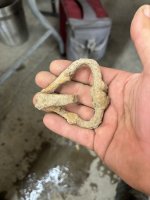garyo1954
Full Member
- Jan 4, 2013
- 125
- 75
- Detector(s) used
-
Fisher F2
Teknetics Delta 4000
- Primary Interest:
- All Treasure Hunting
No, please see post #7 page 1 of this thread! If you happen to read the whole thread you will see that this is all connected to Oak Island and Nova Scotia.
Cheers, Loki
Thank you for pointing that out. Admittedly, I skipped all the historical blurps as they show no connection to Oak Island. Its commendable and exhaustive research but without showing how and why (or why and how you believe) it is tied to Oak Island it remains unclear to the general readers.
To the "ignorant" reader, those who don't have access to this background; it is has no meaning. No matter how well written it is, without bringing it all together it remains nothing but history blurps that may or may not have some connection to each other and/or Oak Island.
Most great theories fail due to missing pieces (the clues necessary to solve the mystery). Like the 90' stone, the tombstone, etc. These are items much less fragile than parchments or paintings. And of all the people who had access, one person found what he believes is a clue in a parchment or painting that could have well have been lost, purged, or burnt. Is it logical to hide clues in plain sight if the clues get obliterated? Or if the clues are not readily available to those you want to pass the clues too?
It seems self-defeating. In a modern vernacular it's like having 40 tons of kryptonite and no Superman to use it on.
Although I can appreciate your exhaustive research, unless you can show a fundamental tie to Oak Island, it leaves the reader baffled as to why any of it was necessary, and how you came about putting these pieces together?
Can you explain those to us?



